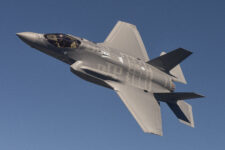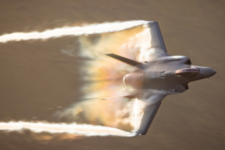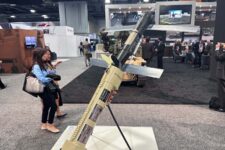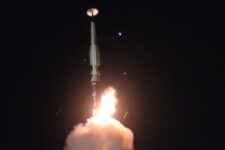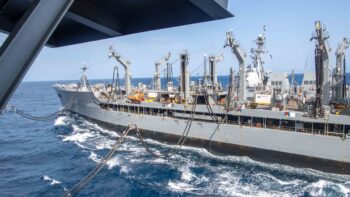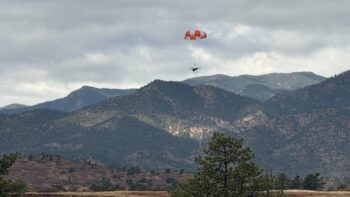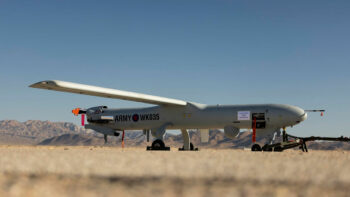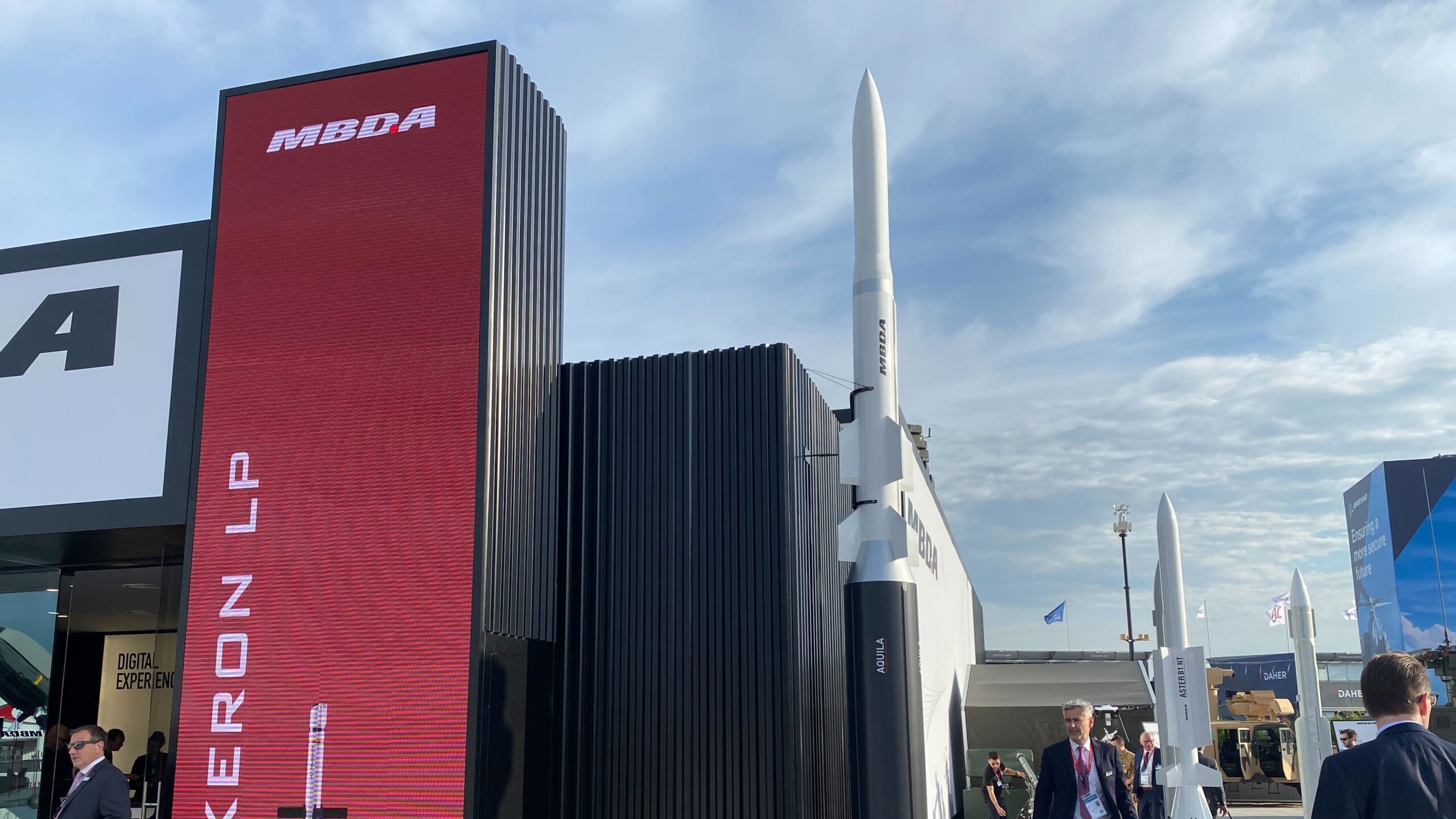
MBDA’s Aquila hypersonic interceptor on display at the Paris Air Show (Breaking Defense)
PARIS AIRSHOW — European weapons manufacturer MBDA has revealed a new hypersonic missile interceptor concept, dubbed Aquila, as part of plans to field an endo-atmospheric interceptor capability in 2030.
The company specifically showcased a three-stage rocket design here in Paris but said two-stage concepts are also under consideration.
Aquila, the result of five years of internal research, currently fits within a €80 million ($87 million), three-year concept phase funded by the European Defense Fund (EDF) and is backed industrially by the MBDA-led Hypersonic Defence Interception Study (HYDIS ²) consortium, involving 19 industry partners and 30 subcontractors from 14 European countries.
At a more fundamental level, the weapon is aligned with the European Union’s Permanent Structured Cooperation (PESCO)-sponsored Timely Warning and Interception with Space-based TheatER Surveillance (TWISTER) program, that aims to have an endo-atmospheric — meaning it doesn’t go into space — hypersonic interceptor entering service in 2030.
Company executives here at the Paris Airshow told media Tuesday that the Aquila concept has support from partner nations France, Italy, Germany and The Netherlands, who will be collectively responsible for agreeing on a final design at the end of the concept phase.
“We have clear buy-in from our nations for such a solution, because we need to make sure to address their requirements, address their threat analysis and to be aligned with their understanding moving forward,” said Rainer Stockhammer, team leader for TWISTER at MBDA. “So, we are entering the concept phase with three multistage interceptor architectures.”
MBDA will also focus on maturing critical technologies to determine the best possible Aquila design.
“On some key technologies, we are starting off with TRL (Technology Readiness Level) one or two but in the end, we need to manage to come to a certain technology readiness level to put our nations in a position to start development after three years,” added Stockhammer.
MBDA had previously campaigned with Aquila in a bid to secure a place on the €100 million ($106 million) EDF-funded European Hypersonic Defense Interceptor (HYDEF) program, before a seven country consortium led by Spain’s Senor Aerospace was selected by the EU in 2022, according to Aviation Week.
Similar to TWISTER, HYDEF has been designed to offer Europe an endo-atmospheric interceptor, though the latter has been setup to address threats beyond 2035.
“There is nothing like this [Aquila] in the US or Israel,” said Lionel Mazenq, head of counter-hypersonic programs at MBDA. “The top ceiling for endo-atmospheric interceptor [capabilities] is the [Ryatheon made] SM-6 missile.” He noted however that DARPA’s Glide Phase Interceptor (GPI) program has defined a “similar analysis of the situation” in relation to shaping future endo-atmospheric capabilities.
Israeli manufacturer Rafael announced June 14, the release of Sky Sonic, a hypersonic interceptor integrated with “exceptional maneuverability and high-speed capabilities,” according to a company statement. Sky Sonic was unveiled at the Paris Air Show on Monday.
